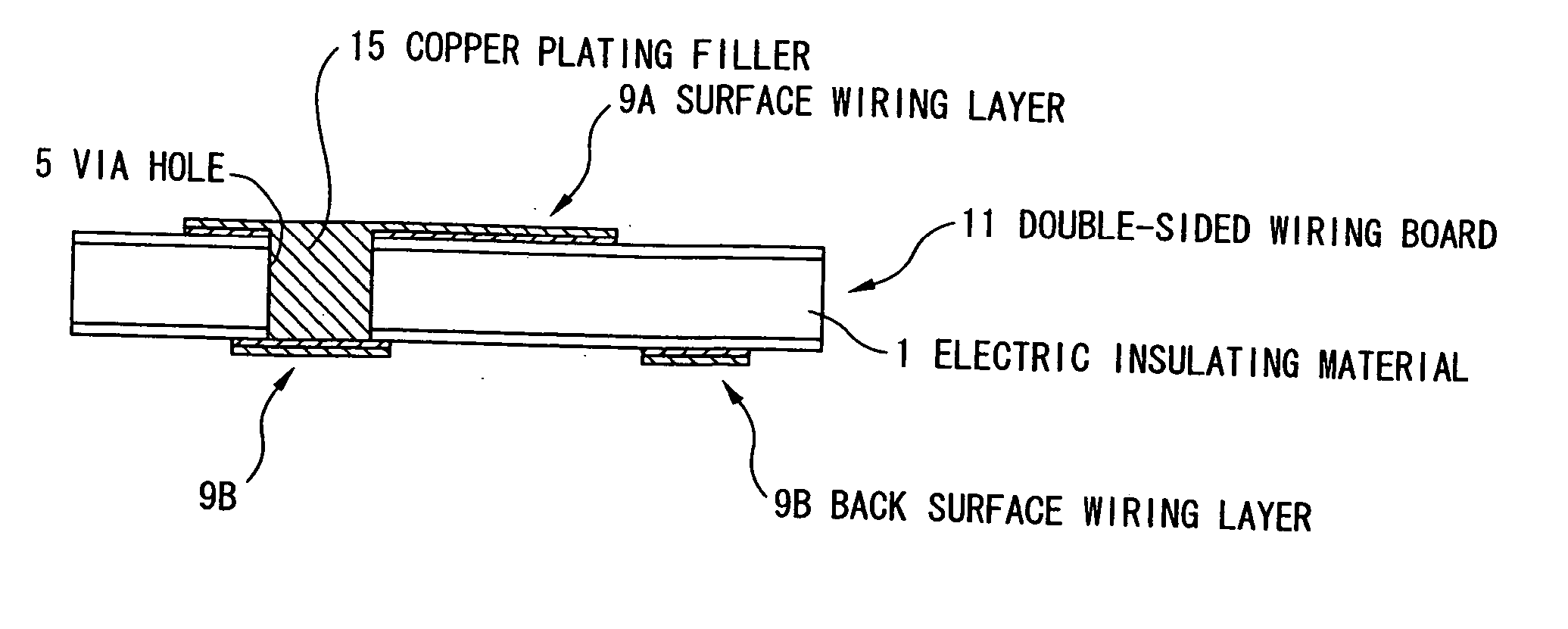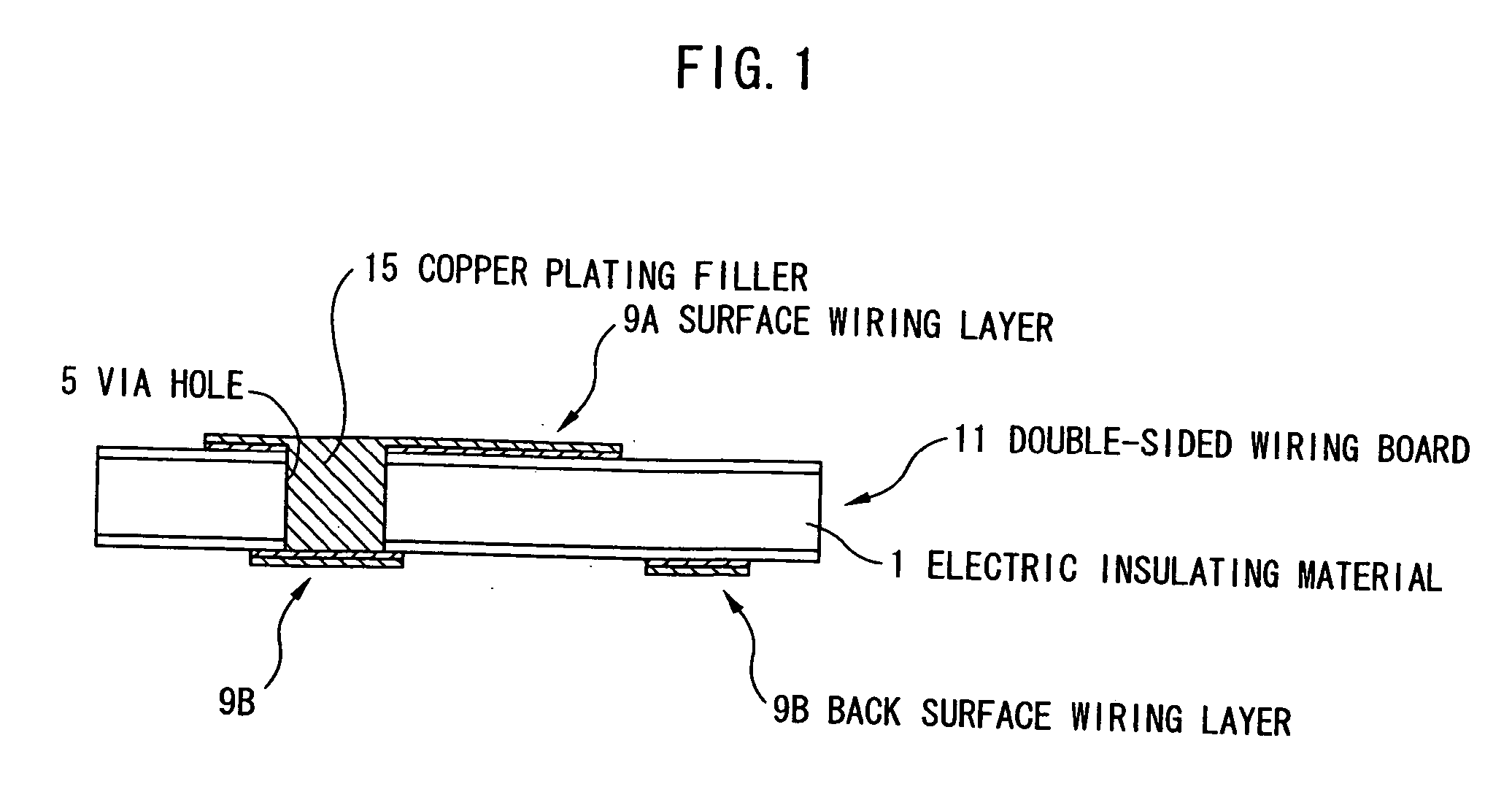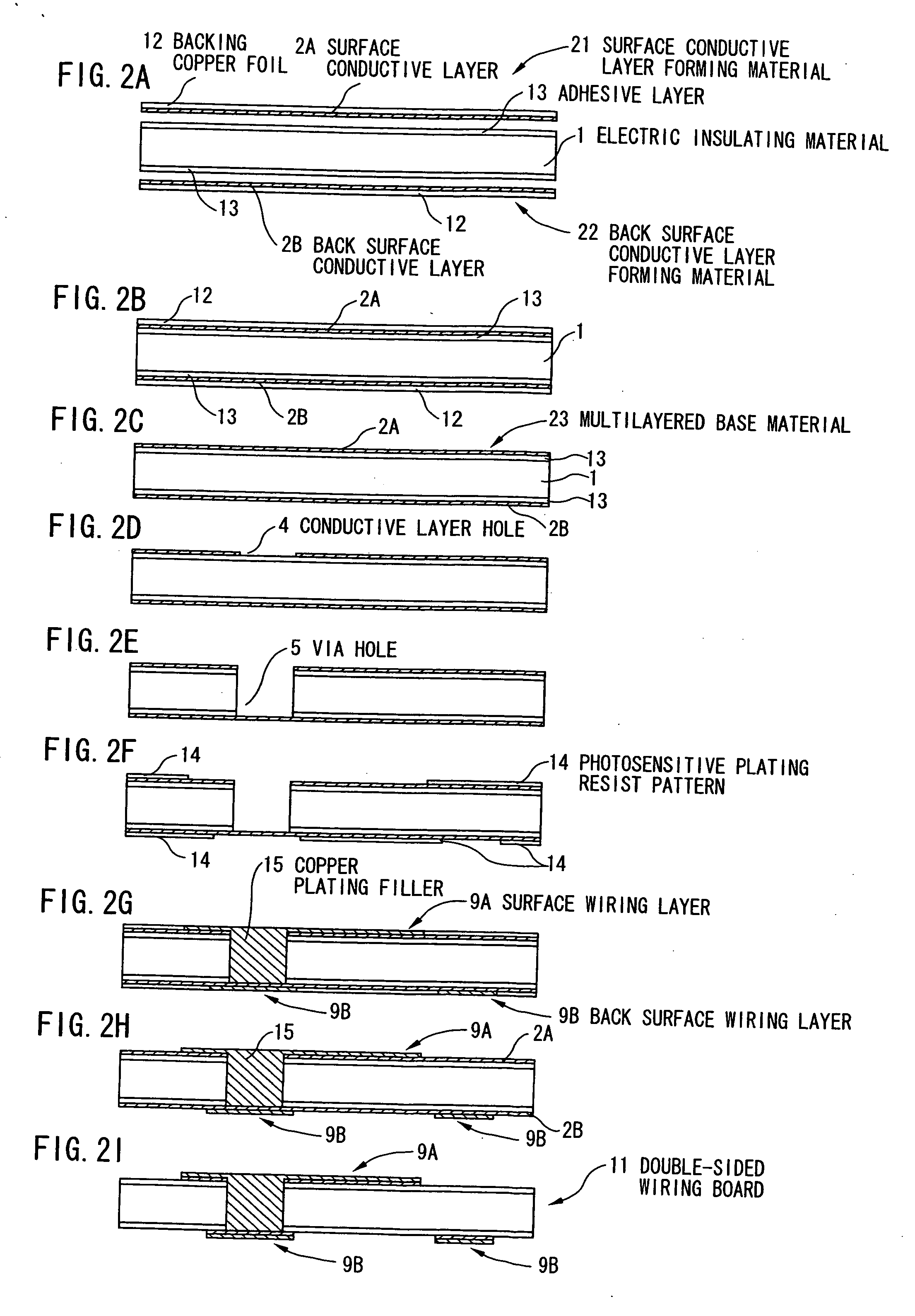Method for fabricating a multilayer wiring board, multilayer wiring board, and electronic device using the same
- Summary
- Abstract
- Description
- Claims
- Application Information
AI Technical Summary
Benefits of technology
Problems solved by technology
Method used
Image
Examples
first preferred embodiment
[0108] (Structure of a Double-Sided Wiring Board)
[0109]FIG. 1 shows a cross sectional view of a double-sided wiring board in the first preferred embodiment according to the present invention.
[0110] A double-sided wiring board 11 comprises an electric insulating material 1, a via hole 5 penetrating through the electric insulating material 1 from a front surface to a back surface, a copper plating filler 15 for filling the via hole 5, a surface wiring layer 9A formed on the front surface, and a back surface wiring layer 9B formed on the back surface.
[0111] (Method for Fabricating the Double-Sided Wiring Board)
[0112] Based on FIGS. 2A to 2I, a method for fabricating the double-sided wiring board shown in FIG. 1 is explained.
[0113] At first, for an electric insulating material 1 shown in FIG. 2A, a high heat-resistant material composed of, for example, polyimide is prepared. For the case using a TAB tape, it is possible to use a polyimide tape generally having a width of 35, 70, or...
example 1
[0130] A double-sided wiring board 11 was fabricated by the method for fabricating a double-sided wiring board in the first preferred embodiment shown in FIGS. 2A to 2I.
[0131] On one surface of a backing copper foil 12 with a thickness of 18 μm and a width of 26.5 mm, a chromium electroplating layer is formed to have a thickness of 0.02 μm. Then a surface conductive layer 2A is formed to have a thickness of 2 μm by the electrolytic copper plating using a copper sulfate plating bath to provide a surface conductive layer forming material 21. In similar manner, a back surface conductive layer 2B is formed to have a thickness of 2 μm to provide a back surface conductive layer forming material 22 (FIG. 2A).
[0132] Next, both surfaces of an electric insulating material 1 composed of a polyimide tape with a thickness of 25 μm and a width of 35 mm are sandwiched by the surface conductive layer forming material 21 and the back surface conductive layer forming material 22 via an epoxy system...
third preferred embodiment
[0153] (Structure of a Double-Sided Wiring Board)
[0154]FIG. 5 shows a cross sectional view of a double-sided wiring board in the third preferred embodiment according to the present invention.
[0155] A double-sided wiring board 41 comprises a photosensitive permanent resist 16, a photosensitive permanent resist hole 17 penetrating through the photosensitive permanent resist 16 from a front surface to a back surface, a copper plating filler 15 for filling the photosensitive permanent resist hole 17, a surface wiring layer 9A formed on the front surface of the photosensitive permanent resist 16, and a back surface wiring layer 10 formed on the back surface of the photosensitive permanent resist 16.
[0156] (Method for Fabricating the Double-Sided Wiring Board)
[0157] Based on FIGS. 6A to 6J, a method for fabricating the double-sided wiring board shown in FIG. 5 is explained.
[0158] At first, as shown in FIG. 6A, the photosensitive permanent resist 16 is applied to the back surface copp...
PUM
 Login to View More
Login to View More Abstract
Description
Claims
Application Information
 Login to View More
Login to View More - R&D
- Intellectual Property
- Life Sciences
- Materials
- Tech Scout
- Unparalleled Data Quality
- Higher Quality Content
- 60% Fewer Hallucinations
Browse by: Latest US Patents, China's latest patents, Technical Efficacy Thesaurus, Application Domain, Technology Topic, Popular Technical Reports.
© 2025 PatSnap. All rights reserved.Legal|Privacy policy|Modern Slavery Act Transparency Statement|Sitemap|About US| Contact US: help@patsnap.com



